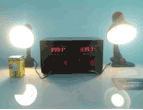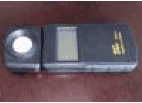When you shop for LED light bulbs keep in mind that what you need is Lumens, which means light, and certainly don't go for the higher watt figures!
Our brain is programmed to believe higher watt means higher light output which will give a brighter light. This phenomenon is totally WRONG when it comes to LEDs.
Unfortunately we are ready to pay more money for more watt values.
We want brighter light bulbs so we demand bulbs with higher watt ratings.
Why are we doing this, and how can we understand the true nature of LEDs?
Here I'm going to explain how to calculate the benefits of using LEDs by using some simple maths.
When we talk about lumen per watt we understand higher the number better the LED chip. IF you are with me, lets explore the following scenarios.
First scenario: Hypothetically speaking if a chip from Company "A" consumes 1 watt and gives out 100 lumens and a chip from Company "B" gives 120 lumens using 1 watt. Which do you think is the better chip?
Of course the chip from Company "B" is a better Chip than the one from Company "A" and it is better by 20%.
In a second example: Company "C"'s light bulb gives 300 lumens total flux but consumes 5 watts and Company "D"'s light bulb also gives 300 lumens but only consumes 3 watt, then which is the better bulb?
Of course the bulb from Company "D" is far better than the other one: since it consumes 40% less electricity to give you the same amount of light.
The third scenario is actually a combination of both examples mentioned above. Lets say a light bulb from Company "E" produce 200 lumens and consumes 5 watt and a Helios light bulb from U-Tron produce 300 Lumens but consume only 3 watt. How much better is the Helios U-Tron?
The US Department of Energy is educating the public to use the Efficacy as the unit of measure when its comes to the quality of an LED light bulbs. Its works like this, take the total light flux and divide by the total wattage of the bulb and you get a number that's called "Efficacy". In the third scenario the Efficacy of the bulb from Company "E" is 40 LPW and that for Helios from U-Tron is 100 LPW.
Conclusion:
So if you pay RMB40 Yuan for the light bulb from Company "E" this should be equal to paying RMB100 Yuan for the Helios from U-Tron. A very simple argument you will agree: so am I correct?
Correct, but not quite so. Because we haven't taken into account the extra 2 watts of excess electricity you will be wasting every time you use the light bulb from Company "E". Although this may not seem to be a lot of money, it is money you could have saved it if you had made the right choice at the beginning.
Now having said that, let me show you how much money you would be wasting by making the wrong choice and buying the inferior product.
Lets take a 24/7 application such as a public underground parking garage. KWA = 2 watt x 24 hours x 365 days / 1000 = 19.27. Now if you multiply this number 19.27 by the price you pay for your electricity (In Beijing the price of electricity is RMB1.1 Yuan per KWA for commercial establishments) you can calculate the cost of the wasted energy. So if the bulb is used for 5 years then you are going to waste RMB 96.58 Yuan per every bulb.
Energy, can't be created or destroyed,
Furthermore, in a LED we must keep the bulbs from overheating, to prevent or minimize any damage to its core chip to prolong its life cycle. Poorly managed heat can destroy an LED's light emitting capability. In this respect, a Helios with a higher efficiency produces much less heat than any LED light bulb that works at lower Efficacies. Energy, can't be created or destroyed, you can only transform to other forms, so where is all the energy is going when its not converted to light? "Heat" is the by-product that we don't want. The simple way to compare LED light bulbs is just by touching the bulb's heat sink after they have been working for 2 to 3 hours. You will know which bulb has the better Electricity to Light conversion rate.
Yi Fen Qian, Yi Fen Huo
So make the right choice from the beginning and don't buy inefficient light bulbs just because they are cheaper, in fact the better bulbs are always more economical in a long run. In Chinese they say "yifen qian yifen huo."
Next time when shopping for a LED light bulb ask for more lumens, and don't ask for more watts, ask for LED Helios from U-Tron and you will save yourself money and do a big favor to our earth by reducing your carbon footprint.
Sales Kit from U-Tron
 U-Tron have designed using two simple watts meters side-by-side in an enclosure where you can plug in two light bulbs from different manufactures and show your customer the numbers so he or she can tell for themselves which one is consuming less energy. (The newer version of the Watt Meter from U-Tron has two easy E27 sockets on the top of the box so you don't need table lamps. Ordering part number is 6860-200-R2)
U-Tron have designed using two simple watts meters side-by-side in an enclosure where you can plug in two light bulbs from different manufactures and show your customer the numbers so he or she can tell for themselves which one is consuming less energy. (The newer version of the Watt Meter from U-Tron has two easy E27 sockets on the top of the box so you don't need table lamps. Ordering part number is 6860-200-R2)
 And by using the U-Tron LUX meter you can read the illumination values of each light bulb just by measuring the LUX from an equal distance from the light source. We usually hold it 1 foot higher than the light source. The value is only for your reference and just to compare two light bulbs given all the rest of the environment and conditions are constant. (Ordering part number is 6800-S01-S1)
And by using the U-Tron LUX meter you can read the illumination values of each light bulb just by measuring the LUX from an equal distance from the light source. We usually hold it 1 foot higher than the light source. The value is only for your reference and just to compare two light bulbs given all the rest of the environment and conditions are constant. (Ordering part number is 6800-S01-S1)
So why LED Helios?
1. Higher Efficacy (LPW)
2. Interchangeable lids Clear, Milky and semi-transparent to fit your needs
3. Less heat out put
4. Over 25,000 hours operation
5. Lowest Watt per bulb
6. Three years warranty (we are working on giving an even longer warranty)
7. Has dimming function
8. Patented shape and design





